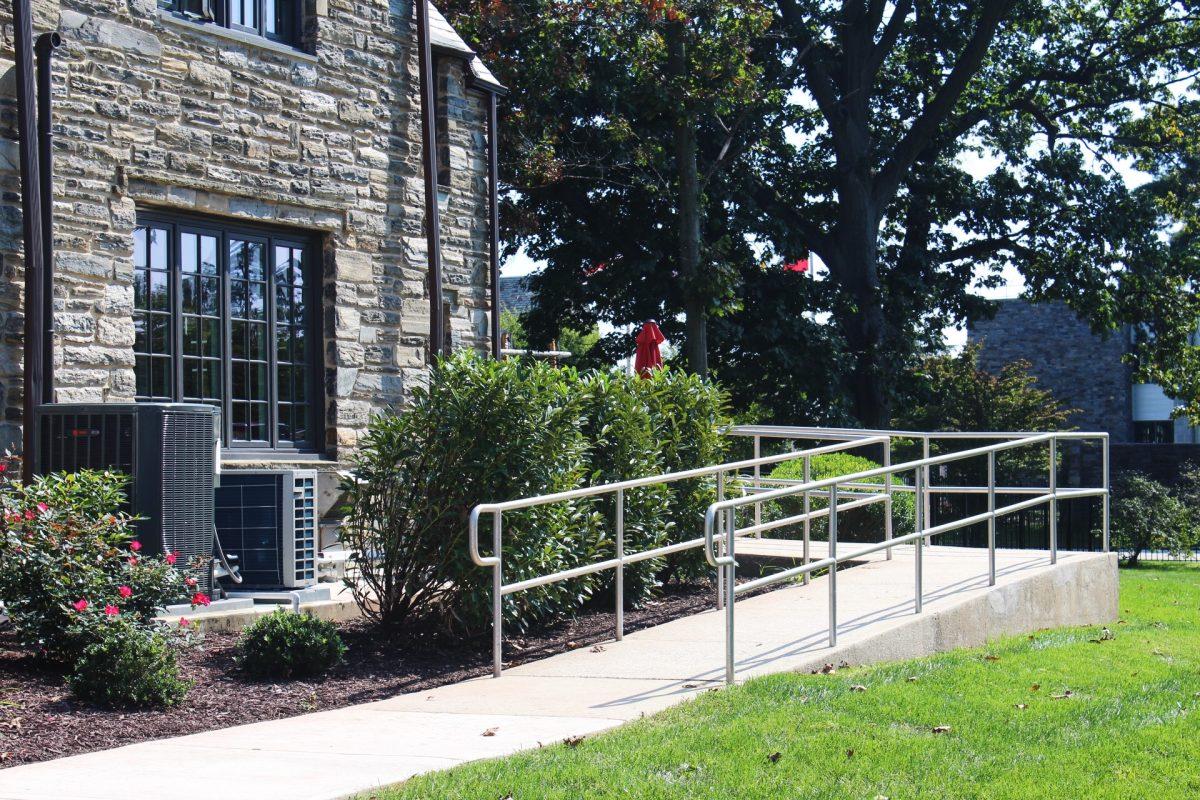The university is set to release this month its newest master plan, Think Anew, Act Anew, which will feature improvements to pedestrian movement on campus.
“Unifying campus is probably the over-arching goal,” said Kevin Kane, associate vice president of Facilities Management and a major contributor to the plan’s development.
Kane, along with Tim McGuriman, associate vice president of administrative services, worked with outside consulting group Sasaki to help make the plans and visions of University President Mark C. Reed, Ph.D. and other senior administrators a reality. Faculty, students and the university’s neighbors were also consulted.
“This is all part of a vision that Dr. Reed has for this university, in consultation with the constituent groups he has the most contact with,” said McGuriman.
Think Anew, Act Anew comes as the university’s previous set of strategic goals, Plan 2020, is set to expire.
While some aspects of Plan 2020 have been successfully completed, like the renovations to Merion Hall that created the atrium and the implementation of the GEP in the academic curriculum, other pieces, like faculty workshops on Ignatian pedagogy and the development of co-curricular experience programs for upperclassmen, never became realities.
“They [master plans] all look really good on paper, but it’s another thing to transform them into a reality,” said Robert Moore, Ph.D., professor of sociology and a member of the steering committee for Plan 2020. “I have seen quite a few of those over the years, with scaled models and so on, partly come to fruition and partly shelved.”
Moore said that over his 30-plus years at the university, this pattern is typical.
“It’s not unusual at a place like St. Joe’s to have a plan that, by necessity, is modified as you look into the details and as reality presents itself,” Moore added.
This time around, the plan leaves room for whatever changes come in the next decade on campus, said McGuriman, who is spearheading the formation of the master plan.
“Inherent within this plan is flexibility,” McGuriman said. “While today we have a vision for something being in a certain place, other opportunities could present themselves that may make more sense to consider. I think that was purposeful in this.”
Another part of the formation of the plan done purposefully was the incorporation of student voices, particularly those from University Student Senate.
“The contractors in charge of the project met with Student Senate last winter and displayed three different options that they had, and we provided feedback on all three,” said Jason D’Antonio ’19, Student Senate president. “They were different in their own right, but each one of them had the goal of allowing campus to be more interconnected.”
Something that has proven to be a barrier in unifying Hawk Hill are the challenges surrounding accessibility for students with disabilities.
That concern will be highlighted in the master plan this time around.
“There is no accessible way to get from Campion to Mandeville Hall,” Kane said. “You either have to go down the ramp to Bellarmine, or you have to go out to City Avenue and down the sidewalk.”
There will soon be a walkway beginning behind Bellarmine Hall to provide an accessible route to Mandeville Hall, Kane said.
Additionally, an accessible path from Merion Hall to Furman Walk, located near Curran Field, is also in the works.
“We’ve got design standards for those now,” McGuriman said. “A lot of this is about setting university standards that we need to do as part of that unification effort.”
Christine Mecke, director of the Office of Student Disability Services, said removing the physical obstacles the campus presents is a crucial part of creating a more interconnected student and faculty population.
“Accessibility for all students is vitally important to the university,” Mecke said. “We want to make the campus open to every student, faculty and staff member as well as our parents, visitors and guests.”
Overall, McGuriman said he is pleased with the plan and its potential to impact the university.
“On campus now, there are some opportunities as a blank canvas to think about some things we never really thought about before and I think that has people thinking differently than we’ve ever before,” McGuriman said. “I’m really proud of it.”
McGuriman described the plan as being in its “finalization stage” now, with the goal for a release date sometime in mid-October. How the plan will be released is still being decided, he said.














































